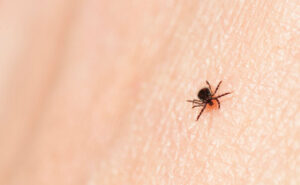
Photo: RobertAx/iStock / Getty Images Plus
New research from Burnaby, British Columbia-based Simon Fraser University (SFU) suggests the use of ant pheromones as either a topical repellent or an environmental barrier may help protect humans from black-legged ticks (Ixodes scapularis). The species, also known as deer ticks, are potential carriers of Lyme disease and other illnesses.
The team chose Formica oreas, a wood ant species commonly known as hill mound ants or “Oreo” ants, to use in the study.
“We decided to look at ants because they are social insects and use a huge range of pheromones to communicate with one another,” said lead author Claire Gooding, a member of the SFU Gries Lab.
The study found ticks avoided surfaces where ants had been, even if those ants were removed. “They could see that there were ants and basically go, ‘I’m not going to go there, because there may be ants there, or there may be ants there again soon in the future,’” she said.
From there, the team identified the specific chemical pheromones as well as the two ant glands that produced them. They then worked with a synthetic chemist and an analytical chemist to recreate a synthetic version of those pheromones. They found that ticks avoided the synthetic pheromone, too.
The team, which works with industrial sponsors to further discoveries into the applied world, has a patent application on the repellent chemicals. Gooding said they hope to bring the chemicals to market either as a topical repellent (like mosquito repellent), or as an environmental repellent, which could be used with a physical barrier, like woodchips, to deter ticks from entering an area or a hiking trail.
READ MORE: RoyalSocietyPublishing.org/doi/10.1098/rsos.231355
Leave A Comment